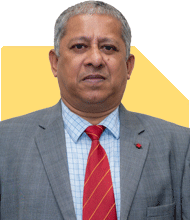Ramalingam Kalirajan |9273 Answers |Ask -Follow
Mutual Funds, Financial Planning Expert - Answered on Jun 05, 2025
He has an MBA in finance from the University of Madras and is a certified financial planner.
He is the director and chief financial planner at Holistic Investment, a Chennai-based firm that offers financial planning and wealth management advice.... more

I need to fix my portfolio. I have sips in 29 folios. Tata small cap Nippon small cap Edelweiss midcap Motilol midcap Paragh parikh flexi Hdfc flexi Hdfc hybrid Hdfc defense Adityabirla defense Quant small cap Quant flexi Quant active Mirae asset Elss Pgim elss
First, Understand the Current Portfolio Structure
You hold too many small cap and mid cap funds.
There is sector exposure to defence. It adds higher risk.
There are three ELSS schemes, which is unnecessary.
You are investing in flexi cap and hybrid funds, which is good.
Quant and HDFC schemes repeat across categories.
This shows fund duplication and style overlap.
Excess diversification is not real diversification. It weakens performance.
More folios increase tracking issues and no clear goal-linking.
Your investments lack proper structure and focus.
Problems with Over-Diversification
Too many funds means no clear direction.
Portfolio becomes hard to track and manage.
Many schemes may hold same stocks. No benefit from duplication.
Fund manager styles may clash. Returns can cancel each other.
High risk when multiple small/mid caps are held.
Sector funds like defence carry theme-specific risk.
Even SIP becomes confusing with 29 different entries.
In short, too many funds reduce overall efficiency.
Step-by-Step Plan to Fix the Portfolio
First step is to do portfolio consolidation.
Bring down fund count to 7 or 8 maximum.
Divide based on market cap, risk, and purpose.
Mix large cap, mid cap, hybrid, and flexi cap.
Retain only 1 small cap fund for limited exposure.
Remove all duplicate ELSS funds. Keep just one for 80C.
Exit all sector funds like defence. Too risky and narrow.
Shift those amounts to diversified equity or hybrid funds.
Choose only one good fund per category.
Maintain SIPs only in selected 6 to 8 schemes.
Stop SIPs in all other schemes over the next few months.
Avoid stopping all together. Redeploy with guidance.
Suggested Fund Basket by Category
You can re-structure SIPs under these broad categories:
Large and Flexi Cap – Keep 2 funds.
Mid Cap – Keep 1 fund.
Small Cap – Keep only 1 fund. Not more.
Aggressive Hybrid Fund – Keep 1 fund for stability.
Tax-Saving ELSS – Keep only 1 fund if 80C is not covered.
That’s a total of 6 funds. Easy to track and manage.
Why Not Keep Direct Plans
Direct funds don’t offer review or guidance.
When market moves, you won’t know when to act.
There is no handholding or strategic realignment.
Expense ratio is lower, but returns can be lower too.
Behavioural mistakes may cost more than fee savings.
Always invest through Certified Financial Planner with MFD.
Regular plans through MFD + CFP provide peace of mind.
You get proper fund curation, annual review, and goal tracking.
Index Funds Not Suitable Here
Index funds blindly follow the market.
They can't reduce exposure during market falls.
No downside protection. Also no strategy adjustment.
You already hold actively managed funds with good managers.
Stick to those. Index funds do not add any value here.
Active funds adapt to changing market cycles.
Index funds are only marketed as low-cost. Not always best.
Taxation Angle to Keep in Mind
When selling equity mutual funds, check gains.
LTCG above Rs. 1.25 lakh taxed at 12.5%.
STCG taxed at 20% flat.
If you switch from old funds to new ones, check capital gains.
You can spread switches across 2 financial years to reduce tax.
Don’t redeem all funds at once. Redeem in a phased way.
A Certified Financial Planner can help plan the timing.
What To Do with ELSS Investments
Keep only one ELSS SIP. Stop others gradually.
ELSS lock-in is 3 years. So don’t disturb ongoing units.
New SIPs should go only in one ELSS fund.
Don’t mix ELSS and normal equity funds for long-term goals.
Use ELSS only for 80C tax saving, nothing else.
What You Should Immediately Act On
List all your 29 SIPs. Mark scheme names, monthly SIP, folio numbers.
Identify category of each fund: large cap, mid cap, small cap, hybrid, ELSS.
Group and remove duplicates. Keep best fund in each group.
Get help from Certified Financial Planner to pick top performers.
Stop SIPs in removed funds step-by-step.
Avoid abrupt changes. Rebalance in 2–3 months.
Redeem sectoral and theme-based funds slowly.
Add that money to existing SIPs in chosen funds.
How to Track Performance Going Forward
After cleaning portfolio, tracking becomes simple.
Just 6 to 8 SIPs. All linked to specific goals.
Use a single online platform to track all folios.
Have yearly review with a Certified Financial Planner.
Discuss fund performance, risk, and asset allocation every year.
If any fund underperforms for 3+ years, consider replacement.
Do not switch funds frequently. That affects long-term returns.
Avoid unnecessary NFOs and fancy new schemes.
Cash Flow and Goal Planning Angle
Match SIPs to your goals like home, retirement, and child education.
Don’t keep random SIPs with no end use.
Every SIP must be linked to a future need.
You will know how much to invest and when to redeem.
This keeps emotions out of the investment process.
Having 29 SIPs with no link to goals creates confusion and stress.
A goal-based structure gives clarity and peace of mind.
Final Insights
Your investing habit is strong. That is your strength.
But too many SIPs spoil portfolio strength.
Reduce from 29 folios to just 6–8 smart schemes.
Remove sectoral, duplicate and overlapping funds.
Stick to regular plans with Certified Financial Planner support.
Avoid index and direct plans. They are not fit for this stage.
Consolidate, plan, and grow peacefully.
Use SIPs to reach specific goals with discipline.
Do annual review and update plans regularly.
You are on the right path. Just take one wise step at a time.
Best Regards,
K. Ramalingam, MBA, CFP,
Chief Financial Planner,
www.holisticinvestment.in
https://www.youtube.com/@HolisticInvestment
You may like to see similar questions and answers below
Omkeshwar Singh | Answer |Ask -Follow
Head, Rank MF - Answered on Aug 02, 2021
Samraat Jadhav |2359 Answers |Ask -Follow
Stock Market Expert - Answered on Apr 17, 2024
Ramalingam Kalirajan |9273 Answers |Ask -Follow
Mutual Funds, Financial Planning Expert - Answered on Apr 15, 2024
Ramalingam Kalirajan |9273 Answers |Ask -Follow
Mutual Funds, Financial Planning Expert - Answered on May 11, 2024
Ramalingam Kalirajan |9273 Answers |Ask -Follow
Mutual Funds, Financial Planning Expert - Answered on May 17, 2024
Prof Suvasish Mukhopadhyay |2058 Answers |Ask -Follow
Career Counsellor - Answered on Jun 29, 2025
Prof Suvasish Mukhopadhyay |2058 Answers |Ask -Follow
Career Counsellor - Answered on Jun 29, 2025
Dr Dipankar Dutta |1661 Answers |Ask -Follow
Tech Careers and Skill Development Expert - Answered on Jun 29, 2025
Prof Suvasish Mukhopadhyay |2058 Answers |Ask -Follow
Career Counsellor - Answered on Jun 29, 2025
Prof Suvasish Mukhopadhyay |2058 Answers |Ask -Follow
Career Counsellor - Answered on Jun 29, 2025
Dr Dipankar Dutta |1661 Answers |Ask -Follow
Tech Careers and Skill Development Expert - Answered on Jun 29, 2025
Dr Dipankar Dutta |1661 Answers |Ask -Follow
Tech Careers and Skill Development Expert - Answered on Jun 29, 2025
Prof Suvasish Mukhopadhyay |2058 Answers |Ask -Follow
Career Counsellor - Answered on Jun 29, 2025
Prof Suvasish Mukhopadhyay |2058 Answers |Ask -Follow
Career Counsellor - Answered on Jun 29, 2025
Dr Dipankar Dutta |1661 Answers |Ask -Follow
Tech Careers and Skill Development Expert - Answered on Jun 29, 2025











.jpg)










